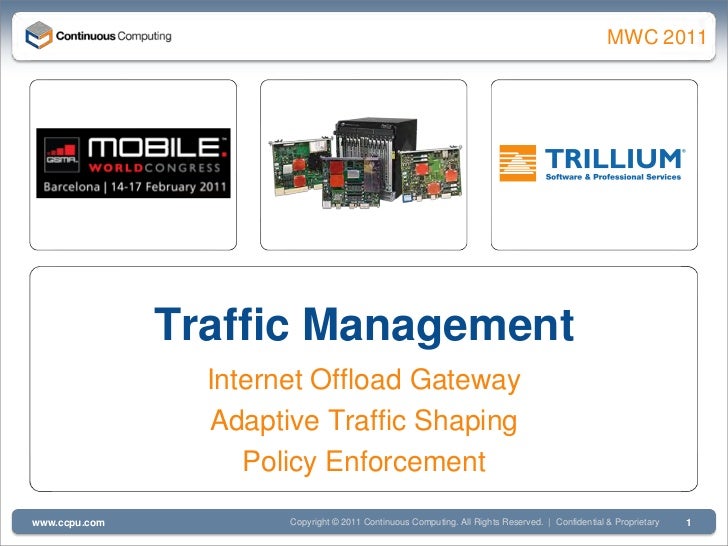
Resource Professionals Gateway to the Internet
Автор: Virginia Lambrecht 13.12.2018Virtualization: Use the RD Gateway

❤️ : Resource Professionals Gateway to the Internet
Select Deployment Scenario Select Session-based desktop deployment. Zero-rating in Emerging Economies. The job postings are from small, mid-sized, and large company career sections. This site provides resources for women and counselors on a broad range of career pathways as well as issues in the workplace.
For selected companies you can obtain corporate and financial information. At the top of the routing hierarchy are the , large telecommunication companies that exchange traffic directly with each other via agreements. Specify RD Session Host server Click the preferred server and click the Add button. Many groups are focused around particular industries and are attended by employees or hosted by employers.

Internet Sites for Career Planning - IPv6 is not directly interoperable by design with IPv4.

It also covers key similarities and differences between the AWS and Azure platforms. Azure and AWS built their capabilities independently over time so that each has important implementation and design differences. Overview Like AWS, Microsoft Azure is built around a core set of compute, storage, database, and networking services. In many cases, both platforms offer a basic equivalence between the products and services they offer. Both AWS and Azure allow you to build highly available solutions based on Windows or Linux hosts. So, if you're used to development using Linux and OSS technology, both platforms can do the job. While the capabilities of both platforms are similar, the resources that provide those capabilities are often organized differently. Exact one-to-one relationships between the services required to build a solution are not always clear. There are also cases where a particular service might be offered on one platform, but not the other. Accounts and subscriptions Azure services can be purchased using several pricing options, depending on your organization's size and needs. See the page for details. Unlike AWS, where any resources created under the AWS account are tied to that account, subscriptions exist independently of their owner accounts, and can be reassigned to new owners as needed. The account administrator can only be changed by transferring ownership of the subscription. By default, the account administrator and service administrator are assigned to the same account. The account administrator can assign a separate user to the service administrator account for managing the technical and operational aspects of a subscription. There is only one service administrator per subscription. Co-administrators cannot change the service administrator, but otherwise have full control over subscription resources and users. Below the subscription level user roles and individual permissions can also be assigned to specific resources, similarly to how permissions are granted to IAM users and groups in AWS. In Azure all user accounts are associated with either a Microsoft Account or Organizational Account an account managed through an Azure Active Directory. Like AWS accounts, subscriptions have default service quotas and limits. For a full list of these limits, see. These limits can be increased up to the maximum by. Azure resources are deployed and managed using one of two models: , or the older Azure. Any new resources are created using the Resource Manager model. However, are not directly comparable to AWS resource groups. While AWS allows a resource to be tagged into multiple resource groups, an Azure resource is always associated with one resource group. A resource created in one resource group can be moved to another group, but can only be in one resource group at a time. Resource groups are the fundamental grouping used by Azure Resource Manager. Resources can also be organized using. Tags are key-value pairs that allow you to group resources across your subscription irrespective of resource group membership. Like the AWS Dashboard, the Azure portal provides a full web-based management interface for Azure resources. The Azure Resource Manager REST API provides programmatic access to most of the features available in the Azure portal. The Azure CLI 2. Azure CLI is available for. The Azure modules for PowerShell allow you to execute automated management tasks using a script. PowerShell is available for. Azure Resource Manager templates provide similar JSON template-based resource management capabilities to the AWS CloudFormation service. In each of these interfaces, the resource group is central to how Azure resources get created, deployed, or modified. The syntax and structure of these interfaces are different from their AWS equivalents, but they provide comparable capabilities. In addition, many third party management tools used on AWS, like and , are also available on Azure. Some hardware failures, such as a failed disk, may affect a single host machine. A failed network switch could affect a whole server rack. Less common are failures that disrupt a whole data center, such as loss of power in a data center. Rarely, an entire region could become unavailable. One of the main ways to make an application resilient is through redundancy. But you need to plan for this redundancy when you design the application. Also, the level of redundancy that you need depends on your business requirements — not every application needs redundancy across regions to guard against a regional outage. In general, there is a tradeoff between greater redundancy and reliability versus higher cost and complexity. In AWS, a region is divided into two or more Availability Zones. An Availability Zone corresponds with a physically isolated datacenter in the geographic region. Azure has a number of features to make an application redundant at every level of failure, including availability sets, availability zones, and paired regions. The following table summarizes each option. Availability Set Availability Zone Paired region Scope of failure Rack Datacenter Region Request routing Load Balancer Cross-zone Load Balancer Traffic Manager Network latency Very low Low Mid to high Virtual networking VNet VNet Cross-region VNet peering Availability sets To protect against localized hardware failures, such as a disk or network switch failing, deploy two or more VMs in an availability set. An availability set consists of two or more fault domains that share a common power source and network switch. VMs in an availability set are distributed across the fault domains, so if a hardware failure affects one fault domain, network traffic can still be routed the VMs in the other fault domains. For more information about Availability Sets, see. When VM instances are added to availability sets, they are also assigned an. An update domain is a group of VMs that are set for planned maintenance events at the same time. Distributing VMs across multiple update domains ensures that planned update and patching events affect only a subset of these VMs at any given time. Availability sets should be organized by the instance's role in your application to ensure one instance in each role is operational. For example, in a three-tier web application, create separate availability sets for the front-end, application, and data tiers. Availability zones An is a physically separate zone within an Azure region. Each Availability Zone has a distinct power source, network, and cooling. Deploying VMs across availability zones helps to protect an application against datacenter-wide failures. Paired regions To protect an application against a regional outage, you can deploy the application across multiple regions, using to distribute internet traffic to the different regions. Each Azure region is paired with another region. Together, these form a. With the exception of Brazil South, regional pairs are located within the same geography in order to meet data residency requirements for tax and law enforcement jurisdiction purposes. Unlike Availability Zones, which are physically separate datacenters but may be in relatively nearby geographic areas, paired regions are usually separated by at least 300 miles. This is intended to ensure larger scale disasters only impact one of the regions in the pair. Neighboring pairs can be set to sync database and storage service data, and are configured so that platform updates are rolled out to only one region in the pair at a time. Azure is automatically backed up to the appropriate paired region. For all other resources, creating a fully redundant solution using paired regions means creating a full copy of your solution in both regions. Not all Azure products and services are available in all regions. Consult the page for details. You can find the uptime guarantees and downtime credit policies for each Azure product or service on the page. The following sections provide a brief explanation of how commonly used features and services differ between the AWS and Azure platforms. Compute services EC2 Instances and Azure virtual machines Although AWS instance types and Azure virtual machine sizes breakdown in a similar way, there are differences in the RAM, CPU, and storage capabilities. Azure has no equivalent to EC2 Spot Instances or Dedicated Hosts. EBS and Azure Storage for VM disks Durable data storage for Azure VMs is provided by residing in blob storage. This is similar to how EC2 instances store disk volumes on Elastic Block Store EBS. Higher performance disk IO is supported using. This is similar to the Provisioned IOPS storage options provided by AWS. Lambda, Azure Functions, Azure Web-Jobs, and Azure Logic Apps is the primary equivalent of AWS Lambda in providing serverless, on-demand code. The number of instances can autoscale based on performance needs. Makes data available through an Internet accessible API. You can set Blob storage for private access or share contents publicly to the Internet. Blob storage serves the same purpose as both AWS S3 and EBS. Table storage is a NoSQL key-attribute data store that allows for rapid development and fast access to large quantities of data. Similar to AWS' SimpleDB and DynamoDB services. File storage is used in a similar manner to EFS in the AWS platform. Glacier and Azure Storage is comparable to AWS Glacier storage service. It is intended for rarely accessed data that is stored for at least 180 days and can tolerate several hours of retrieval latency. For data that is infrequently accessed but must be available immediately when accessed, provides cheaper storage than standard blob storage. This storage tier is comparable to AWS S3 - Infrequent Access storage service. It also provides failover capability. Route 53, Azure DNS, and Azure Traffic Manager In AWS, Route 53 provides both DNS name management and DNS-level traffic routing and failover services. Direct Connect and Azure ExpressRoute Azure provides similar site-to-site dedicated connections through its service. ExpressRoute allows you to connect your local network directly to Azure resources using a dedicated private network connection. Azure also offers more conventional at a lower cost. Costs for AWS RDS are determined by the amount of hardware resources that your instance uses, like CPU, RAM, storage, and network bandwidth. In the Azure database services, cost depends on your database size, concurrent connections, and throughput levels. Web application firewall In addition to the , you can also from third-party vendors like. In Azure, third-party solutions like provide email services. Simple Queueing Service AWS Simple Queueing Service SQS provides a messaging system for connecting applications, services, and devices within the AWS platform. Using the related , Service Bus can also connect to remotely hosted applications and services. Device Farm The AWS Device Farm provides cross-device testing services. In Azure, provides similar cross-device front-end testing for mobile devices. In addition to front-end testing, the provides back end testing resources for Linux and Windows environments.
Google IT Support Professional Certificate
The limits that users face on accessing information via mobile applications coincide with a broader process of. The term is a of Internet and World Wide Web typically used sarcastically to parody a technically unsavvy user. By default, the account administrator and service administrator are assigned to the same account. It is produced by the federal government, is updated frequently, and contains state and national wage information, occupational projections, related occupations and opportunities for more information from professional and trade associations. The RD Gateway can accommodate many connections. Users have the option of selecting several school profiles for side-by-side comparisons, and all search results can be sent to a valid e-mail address, printed, or exported as an Excel spreadsheet. Click on the category below to find the resources you wish to review and use.

